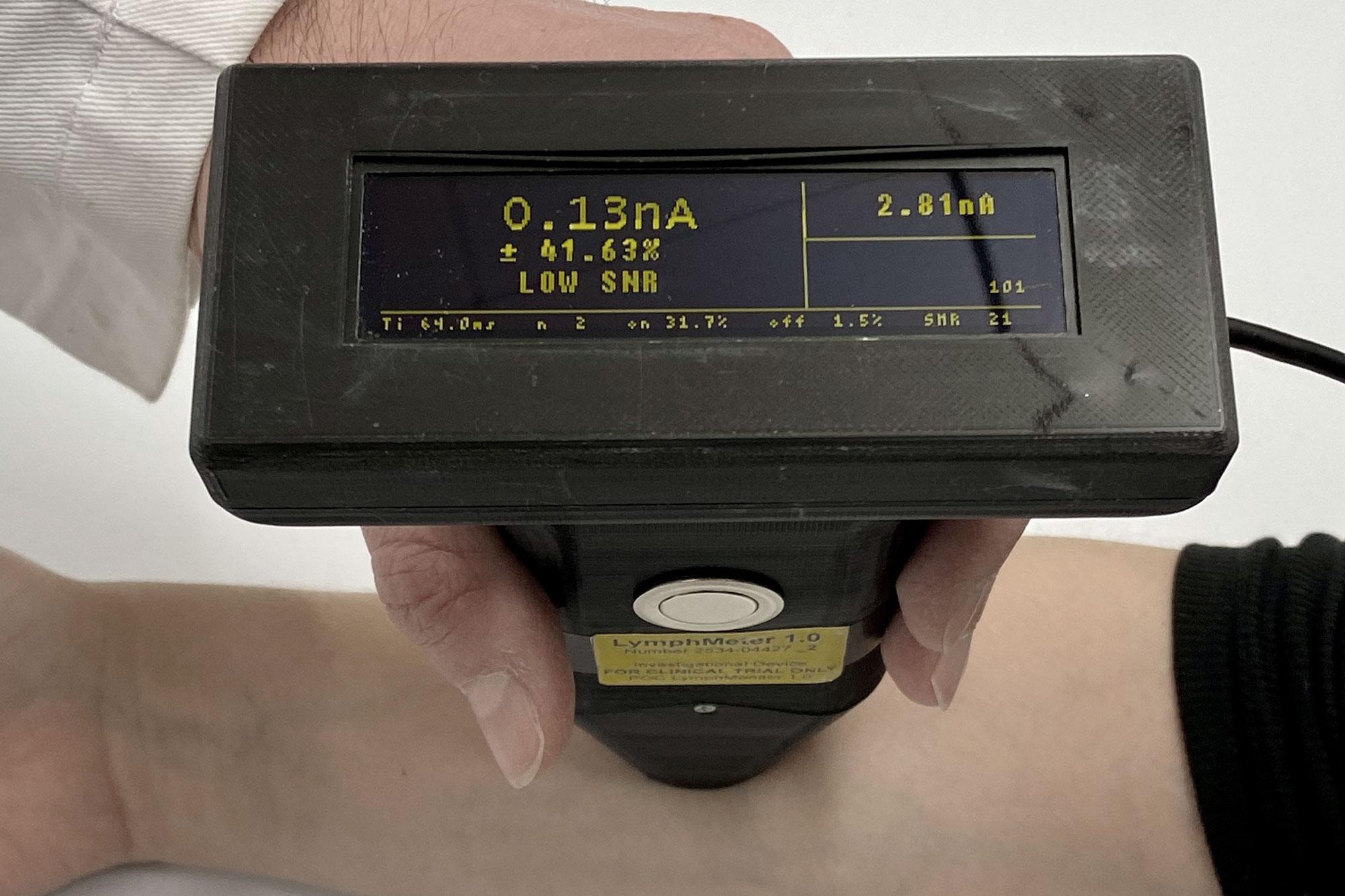Using fluorescence to find lymphoedema

A harmless colouring agent reveals blockages in lymphatic vessels before they are visibly swollen. This enables early treatment.
The lymphatic system is our body's waste disposal service: it removes unwanted substances from tissues in our body. If lymphatic vessels are damaged - as a result of cancer operations, radiation therapy or an accident - toxins and liquids can accumulate in arms and legs. The resulting swellings, so-called lymphoedema, lead to hardened tissue, trigger infections and weaken the immune system. Up until now, complex testing, sometimes involving radioactive substances, was the only means to recognise them early and to establish whether a treatment had been successful.
Now SNSF-funded dermatologist Michael Detmar and his team have developed a very simple alternative method and tested it in humans. The interdisciplinary project was a collaboration of ETH Zurich, Zurich University Hospital and Zurich University of Applied Sciences.
Self-monitoring with smartwatches
Using a microneedle, the researchers injected ten test persons who suffer from lymphoedema with a harmless fluorescent liquid into their arms and legs. A small measuring device then monitored how quickly the fluorescence decreased - which indicated how quickly the lymphatic system removed the colouring agent. By doing this, they could show that their assumption was correct: as expected, the fluorescence decreased more quickly in healthy limbs. No side effects were observed.
According to Detmar, the fluorescence method has the potential to facilitate the early diagnosis of lymphoedema, which can develop even years after a breast cancer operation, for example. If treated with massages or compressions before any swelling is visible, irreversible damage can be prevented. Next, the team wants to develop a wearable device like a smartwatch that automatically injects the liquid and measures the fluorescence. This would allow people at risk to monitor their own lymphatic system at home.